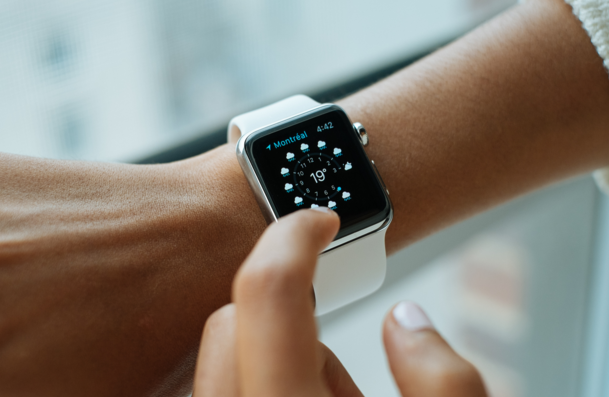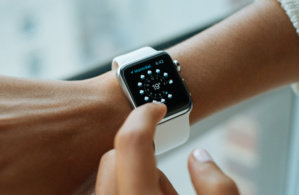Software platform ResearchKit turns the iPhone into a tool for medical research, helping doctors, scientists and other researchers often and more accurately collect data on the health of study participants through a smartphone.
Through ResearchKit, the research participants may execute informed consent, easily perform physical tasks, fill out questionnaires, and select the modes of transmission to researchers of their health data. Researchers and developers are already developing ResearchKit: more than 50 researchers are adding modules to the open software platform.
- We are honored to work with medical institutions of the world level and provide them with tools that will help our customers to live a more healthy life, - said Jeff Williams, senior vice president of Apple's operating matters. - In just six months, the ResearchKit applications have helped in the study of the most various diseases - from asthma and diabetes to Parkinson's disease. Scientists from around the world have made more than 100 thousand new discoveries. The participants agreed to provide their health data for advanced scientific and medical research.
The scientists who conducted the study with ResearchKit, with the permission of the user can access data from an application "Health", such as weight, blood pressure and glucose levels, and other parameters that are measured by third-party devices and applications by registering them in real time directly on the iPhone. Access to the accelerometer, microphone, gyroscope and GPS sensor on the iPhone provides additional data on gait, motor disorders, physical activity, speech and memory of participants. Medical researchers have now obtained access to more objective data.
Duke University and its medical school are launching a program "Autism and beyond" for parents worrying about autism and other developmental problems. The research team is exploring the possibility to use the front camera on the iPhone to detect development problems in a much earlier age. With its emotion recognition algorithms, the application determines the child's reaction to the videos showed on the iPhone. In this study, Duke University is working with Beijing University in China and other foreign partners.
- "Autism and beyond" program combines well-known methods of questioning with new video technology. This allows us to analyze emotions of children, so that we could automate questionnaires revealing autism and anxiety, - says Ricky Bloomfield, director of mobile technology and an assistant professor of therapy and pediatrics at Duke University. - ResearchKit allows us to combine all the medical research in one application and reach people, to which we previously did not have access.
EpiWatch app, developed at Johns Hopkins University, will be first to use Apple Watch with ResearchKit. The purpose of the research - to check whether it is possible to use wearable sensors built into Apple Watch to detect proximity and duration of seizures. In the first phase of this study, using a special complication to Apple Watch, scientists provide the patient with one-touch access to launch a special application on the device, which records the data of the accelerometer and heart rate monitor, composes a digital description and sends a warning to close people.
The application will keep a register of all attacks and the reactions of the participant when they occur. The app will also help cope with the disease by medication tracking and interrogating members on the side effects so that they could compare their condition with other members of the research.
- In the US, more than 2 million people suffer from epilepsy. The new application, built using ResearchKit, give patients online tools that will help them cope with the disease today and open up possibilities for developing applications, recognizing the different types of seizures and notify relatives and care-takers - said Dr. Gregory Krauss, a professor of neurology at the Medical School at Johns Hopkins University. – Now, we have the opportunity to use technology to track the occurrence of seizures across the country and collect data a whole new way.
Oregon Health & Science University is exploring the possibility to use the digital images, taken on the iPhone, to study the growth of nevi and melanoma risk. This will give people an opportunity to photograph and measure the size of moles over time, in order to better monitor the health of their skin. Study participants will be able to document changes in moles and send them directly to specialists and researchers, who will have access to tens of thousands of images from iPhone users around the world. This will help them create algorithms that will be useful in future studies of early detection of melanoma.
- Melanoma needs early detection. If we can detect melanoma in its early stages, giving patients a simple way to share images of their moles, we will be able to learn more about the development of the disease - says the doctor Sancy Leachman, professor of dermatology and director of the study of melanoma at Knight Cancer institute. - Expanding the coverage of our research is extremely important for us to obtain the necessary information. With ResearchKit, it has become easier than ever before: it is enough to develop a simple application for iPhone.
Researchers and developers, using the platform open source, continue to add new ResearchKit modules, active tasks and their own profiles. Active Task module allows collecting more specific data: researchers can invite participants to do the exercises, during which data will be recorded on advanced iPhone sensors. Initially, the module Active Task include assignments to measure motor activity, exercise, mind and voice.
For only six months, more than 50 researchers added active tasks to support new research methods, from tone audiometry to study hearing loss, to measure the rate of reaction by a known stimulus with a known response test distance to a predetermined time, the qualifying test learning for measuring the speed of processing information and active memory and mathematical puzzle "Tower of Hanoi", which is often used in studies of thinking.
source: bloomberg.com
Through ResearchKit, the research participants may execute informed consent, easily perform physical tasks, fill out questionnaires, and select the modes of transmission to researchers of their health data. Researchers and developers are already developing ResearchKit: more than 50 researchers are adding modules to the open software platform.
- We are honored to work with medical institutions of the world level and provide them with tools that will help our customers to live a more healthy life, - said Jeff Williams, senior vice president of Apple's operating matters. - In just six months, the ResearchKit applications have helped in the study of the most various diseases - from asthma and diabetes to Parkinson's disease. Scientists from around the world have made more than 100 thousand new discoveries. The participants agreed to provide their health data for advanced scientific and medical research.
The scientists who conducted the study with ResearchKit, with the permission of the user can access data from an application "Health", such as weight, blood pressure and glucose levels, and other parameters that are measured by third-party devices and applications by registering them in real time directly on the iPhone. Access to the accelerometer, microphone, gyroscope and GPS sensor on the iPhone provides additional data on gait, motor disorders, physical activity, speech and memory of participants. Medical researchers have now obtained access to more objective data.
Duke University and its medical school are launching a program "Autism and beyond" for parents worrying about autism and other developmental problems. The research team is exploring the possibility to use the front camera on the iPhone to detect development problems in a much earlier age. With its emotion recognition algorithms, the application determines the child's reaction to the videos showed on the iPhone. In this study, Duke University is working with Beijing University in China and other foreign partners.
- "Autism and beyond" program combines well-known methods of questioning with new video technology. This allows us to analyze emotions of children, so that we could automate questionnaires revealing autism and anxiety, - says Ricky Bloomfield, director of mobile technology and an assistant professor of therapy and pediatrics at Duke University. - ResearchKit allows us to combine all the medical research in one application and reach people, to which we previously did not have access.
EpiWatch app, developed at Johns Hopkins University, will be first to use Apple Watch with ResearchKit. The purpose of the research - to check whether it is possible to use wearable sensors built into Apple Watch to detect proximity and duration of seizures. In the first phase of this study, using a special complication to Apple Watch, scientists provide the patient with one-touch access to launch a special application on the device, which records the data of the accelerometer and heart rate monitor, composes a digital description and sends a warning to close people.
The application will keep a register of all attacks and the reactions of the participant when they occur. The app will also help cope with the disease by medication tracking and interrogating members on the side effects so that they could compare their condition with other members of the research.
- In the US, more than 2 million people suffer from epilepsy. The new application, built using ResearchKit, give patients online tools that will help them cope with the disease today and open up possibilities for developing applications, recognizing the different types of seizures and notify relatives and care-takers - said Dr. Gregory Krauss, a professor of neurology at the Medical School at Johns Hopkins University. – Now, we have the opportunity to use technology to track the occurrence of seizures across the country and collect data a whole new way.
Oregon Health & Science University is exploring the possibility to use the digital images, taken on the iPhone, to study the growth of nevi and melanoma risk. This will give people an opportunity to photograph and measure the size of moles over time, in order to better monitor the health of their skin. Study participants will be able to document changes in moles and send them directly to specialists and researchers, who will have access to tens of thousands of images from iPhone users around the world. This will help them create algorithms that will be useful in future studies of early detection of melanoma.
- Melanoma needs early detection. If we can detect melanoma in its early stages, giving patients a simple way to share images of their moles, we will be able to learn more about the development of the disease - says the doctor Sancy Leachman, professor of dermatology and director of the study of melanoma at Knight Cancer institute. - Expanding the coverage of our research is extremely important for us to obtain the necessary information. With ResearchKit, it has become easier than ever before: it is enough to develop a simple application for iPhone.
Researchers and developers, using the platform open source, continue to add new ResearchKit modules, active tasks and their own profiles. Active Task module allows collecting more specific data: researchers can invite participants to do the exercises, during which data will be recorded on advanced iPhone sensors. Initially, the module Active Task include assignments to measure motor activity, exercise, mind and voice.
For only six months, more than 50 researchers added active tasks to support new research methods, from tone audiometry to study hearing loss, to measure the rate of reaction by a known stimulus with a known response test distance to a predetermined time, the qualifying test learning for measuring the speed of processing information and active memory and mathematical puzzle "Tower of Hanoi", which is often used in studies of thinking.
source: bloomberg.com






